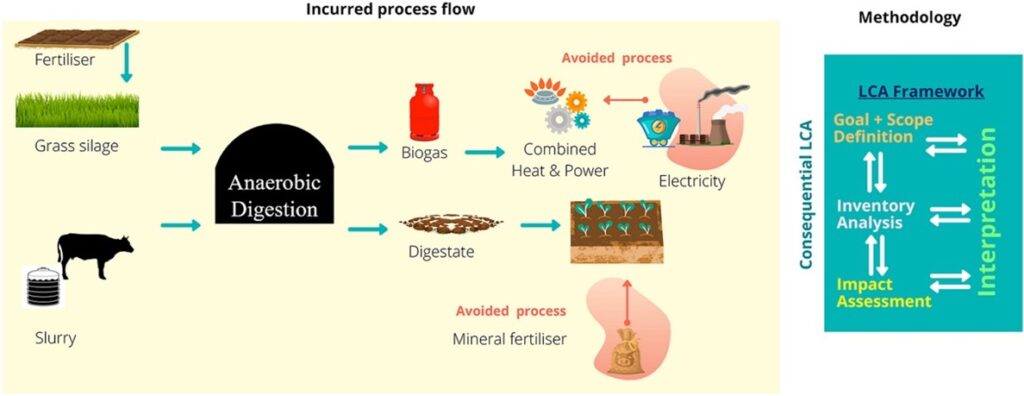Agri-food waste shows promise for bioenergy in Ireland
In Ireland, agriculture remains the single largest contributor to overall greenhouse gas emissions at 35%. The sector has a key role to play in the provision of feedstocks for the production of biogas as a renewable energy resource for the decarbonisation of the transport and heat sectors in particular.
University College Dublin is leading the Agri Bio Circular (ABC) Economy project which aims to reduce greenhouse emissions from agriculture in Ireland by investigating new bio-based products and energy generation from biomass wastes. The project has quantified the biomass available for valorisation in two Irish counties; Monaghan and Tipperary. Ireland has the highest potential for biogas production per capita in Europe, however the industry has yet to take off. There are a number of reasons for this, including a lack of dedicated support schemes. The use of biomass wastes from agriculture, such as manures and slurries, must be shown to be sustainable for the successful deployment of biogas as a key renewable energy resource in Ireland.
Biomass quantified
In the first stage of ABC Economy, the biomass available for valorisation was quantified. Animal manure was found to be the most significant biomass resource, due to the high amounts of cattle and poultry in each county and their relative manure production. In order to evaluate the consequences of using animal manures for the production of biogas, as opposed to traditional manure management, consequential life cycle assessment was used to determine the potential environmental impacts. The findings have been published in two papers in international peer-reviewed journals. In the first study, diverting poultry litter to anaerobic digestion was shown to lead to reduced environmental impacts (Beausang et al. 2020). The net environmental impact depended mainly on the processes displaced by the use of the two co-products, biogas and digestate.
Environmental impact studied
Cattle slurry, along with grass silage, have been identified as potential significant resources for biogas production in Ireland. In the second study, the environmental impacts of digesting different proportions of grass silage and cattle slurry for biogas production was assessed (Beausang et al. 2021). The net environmental impact varied according to the proportion of silage and slurry digested. Higher environmental burdens were observed for mixes with a greater ratio of grass silage to slurry. This research suggests that co-digestion with lower proportions of grass silage may not lead to negative environmental impacts. Policy support for biogas in Ireland should be directed to animal wastes to maximise the potential to mitigate emissions from livestock production.
The research undertaken in ABC Economy has shown that consequential life cycle assessment is a suitable tool to inform decision-makers about the impact of introducing a new multifunctional technology like anaerobic digestion when considering the systems which are displaced. This type of analysis is recommended when considering alternative feedstocks and valorisation pathways in the circular economy.

“Assessing the environmental sustainability of grass silage and cattle slurry for biogas production” by Beausang et al. 2021 is licenced under CC BY 4.0.
Read more:
For further details:
Fionnuala Murphy, University College Dublin: fionnuala.murphy@ucd.ie
Ciara Beausang, University College Dublin: ciara.beausang@ucdconnect.ie
Read more about the ABC Economy Project here: https://www.abceconomy.ie/


